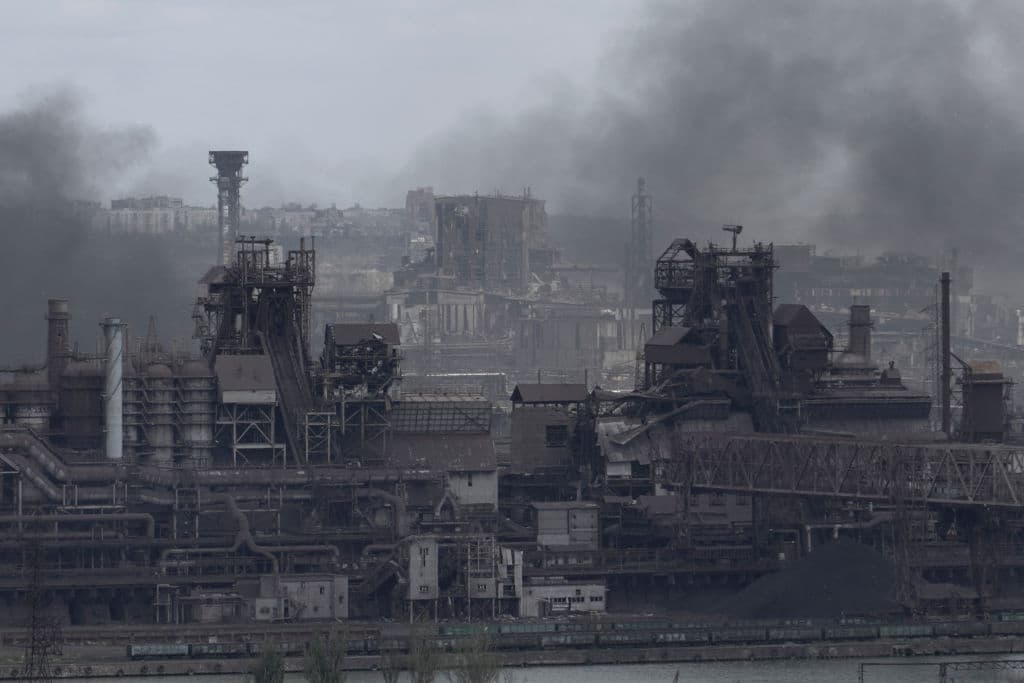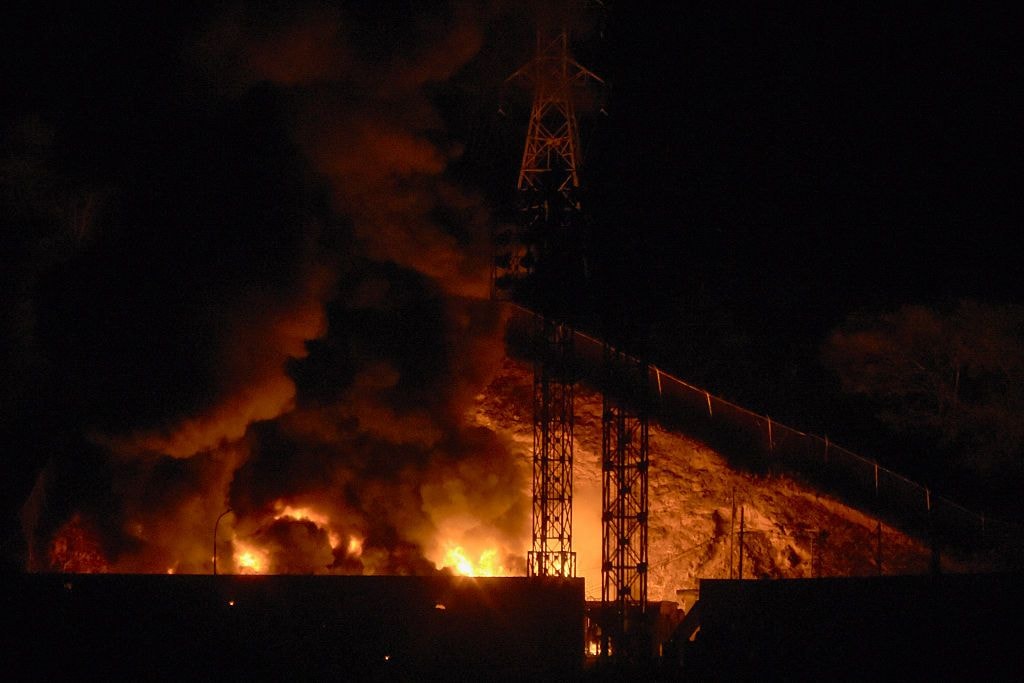Russia’s war slashes Ukrainian exports, forces country to increase imports

Before Russia’s full-scale invasion, Ukraine’s exports were a reason to celebrate. Last year, the country hit a 10-year record with $68 billion in exports.
As Russia’s invasion enters its seventh month, no one can predict when Ukraine can expect to post these kinds of results again.
According to Ukraine’s State Statistics Service, for the first half of the year, the country’s exports decreased by a quarter to $22.7 billion, with imports falling to $25.2 billion, or a 20% decrease year-over-year.
Following this downward trend, as of July, the trade deficit has almost tripled compared to the same period last year, reaching $4.3 billion, Ukraine’s State Customs Service reported.
Russia's brutal war against Ukraine and its five-month-long naval blockade of Ukraine’s Black Sea ports vital for grain exports have disrupted logistics and undermined consumer demand, causing Ukraine’s international trade to shrink dramatically. The war has also forced Ukraine to rely more on imports to fuel the war effort and make up for lost industries.
According to Svitlana Taran, trade policy adviser for Ukraine’s Deputy Prime Minister of European and Euro-Atlantic Integration, the “first shock” to international trade was in March, when the decline in trade was its highest at around 60% in exports and 76% in imports.
Now, the decline has slowed as businesses adjust to new realities. But still, by the end of the year, Taran expects “there will be a significant drop in exports” amid forecasts that Russia’s war won’t end soon.
“We are an export-oriented country, and export revenue is very important given the economic situation in the country,” Taran told the Kyiv Independent. “This should be a top priority.”
War-cut exports
While a halt in Ukraine’s grain exports due to Russia’s Black Sea blockade shook the world and raised alarm over global food security, nearly every industry in Ukraine has seen its exports slashed.
Russia’s Black Sea blockade of Ukraine’s ports led to billions in losses for the country’s revenue. Before Russia’s full-scale invasion, grain exports accounted for 40% of Ukraine’s foreign exchange earnings.
While grain exports resumed in August after a United Nations-backed deal ended the blockade, the results are still modest. For the first eight months of the year, Ukraine exported 3.6 million tons of grain, over 50% less than during the same period last year, the Agriculture Ministry reported.
Ukraine’s second-largest source of export earnings, metal products, has also been knocked out by Russia’s invasion.
In the first half of the year, exports of metal products decreased by 47%, to $3.2 billion. Metallurgy producers have only been able to sell 4.1 million tons, almost 60% less compared to 2021.
The country has lost two of its steel giants, the Azovstal steel plant and the Ilyich plant, both in now Russian-occupied Mariupol, and both owned by Ukraine’s wealthiest oligarch Rinat Akhmetov’s company Metinvest. With production destroyed by Russia’s brutal siege of the city, Ukraine’s metallurgy production has been cut by 30-40%, according to various estimates.
“There are still other (plants), but they have problems with supply chains,” said Taran.
By the end of this year, metal exports may see a decline of three to six times compared to last year, to just $3.6-7.2 billion, Dmytro Khoroshun, an analyst at Concorde Capital, forecasted. In 2021, metal exports reached $21.1 billion, a third of all of Ukraine’s exports.
Before the war, 60% of Ukraine’s metallurgy products were exported through the country’s seaports. The UN-backed deal to open some of Ukraine’s Black Sea ports does not currently include metal exports and efforts to export metal products by rail with transshipment in EU ports have failed, according to Serhiy Bilenkiy, head of Ukraine's Metallurgists Federation.
Bilenkiy says that if the deal was extended to metal products, it could add around $600 million per month in exports to the struggling industry.
Other industries, such as pharmaceuticals, clothing, or the IT sector, managed to escape such a catastrophic decrease in exports. A drop in the export of Ukrainian-produced shoes and clothing was only 10% compared to the previous year, reaching almost $450 million.
Pharmaceutical exports dropped by 23% in the first half of the year, reaching only $102 million – mainly due to the shutdown of factories in Kharkiv, a regional capital in eastern Ukraine under constant shelling by Russia.
“This is one of the few industries that has survived because these products are easier to export compared to others, and they have fewer logistical problems,” said Taran.
Against all odds, the country's IT sector has shown growth and resilience during the war. According to the IT Ukraine Association, the export of tech services for the first half of the year reached $3.74 billion, 23% more than for the same period of the previous year.
In 2021, the IT sector generated about 4% of the country's gross domestic product and had $6.8 billion in exports. With the beginning of Russia’s full-scale war, the industry was able to react quickly, solve logistical problems and move offices to the western regions of the country or even abroad.
However, with the central bank’s new currency policy and uncertainty about hiring IT specialists, many of whom are potentially subject to conscription, the industry may see “a regression in the nearest future," Konstantyn Vasyuk, head of the IT Association, said.
Import dependence
Forced to live with war, Ukraine’s needs have changed.
For instance, the import of fuel to Ukraine – a basic need for the Armed Forces – has become one of the country’s top priorities. Fuel depots all across Ukraine have been targeted by Russian missiles, increasing the need to source fuel from elsewhere.
According to the Economy Ministry, Ukraine has increased fuel imports 12 times since the start of Russia’s full-scale invasion in February, reaching 709,500 tons for the month of August. In March that number was 58,800 tons when the start of the war brought the country to a standstill.
“We are critically dependent on the import of oil products,” said Economy Minister Yulia Svyrydenko. She forecasted that in the next four months, the country's needs would range between 500,000 to 550,000 tons of fuel per month.
At the same time, Ukraine has completely stopped buying Russian fuel and “switched to supplies from the country’s western border,” according to Denys Kudin, first deputy minister of economy.
Currently, the state imports 95% of gasoline and around 70% of diesel fuel from the EU countries – Poland, Romania, Lithuania, Slovakia, Greece, and Bulgaria. Before the war, Russia and Belarus were the main source of fuel imports to Ukraine, supplying 42% of gasoline and 63% of diesel fuel.
The import of goods like fertilizers for agriculture has also increased due to the high dependence on these products among Ukraine’s industries.
One of the major mineral fertilizer producers in Ukraine, the Azot chemical plant, owned by the DF Group of exiled Ukrainian tycoon Dmytro Firtash, said that it had “completely lost control over the plant” in Russian-occupied Sievierodonetsk.
The city, located in Luhansk Oblast, was the scene of intense fighting, with the Azot chemical plant being the last Ukrainian stronghold before the city was occupied.
As a result, the country imported nearly 10% more fertilizers as of July, compared to the previous year, which equals more than half a billion dollars.
Meanwhile, the import of equipment for businesses as well as consumer goods has fallen sharply since the start of the full-scale invasion.
“People have fewer opportunities to buy. Instead, they will buy what is produced in the domestic market, because it is cheaper,” said Taran.










